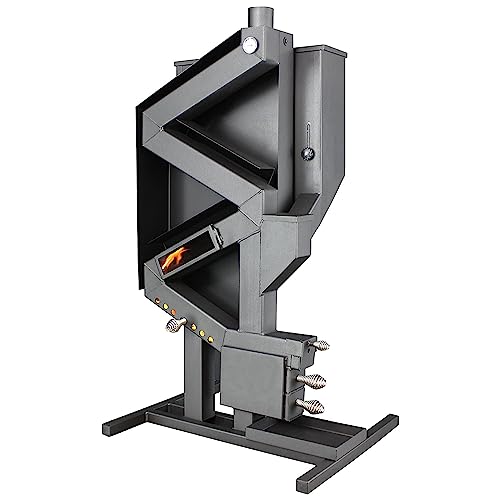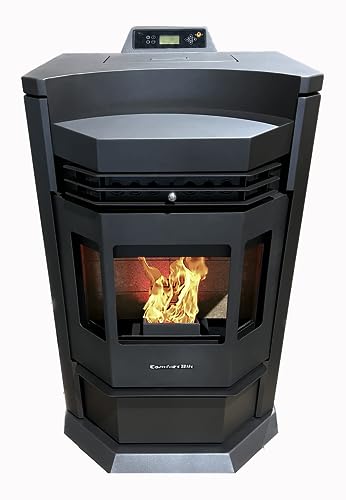Nine Things That Your Parent Taught You About Pellet Stove For Garage
Mose
0
7
2024.10.30 22:09
 Pellet Stove For Garage Or Workshop
Pellet Stove For Garage Or WorkshopA pellet stove is a cost-effective and efficient method of heating your workshop or garage. Look for models that have high BTU ratings and energy-saving features.
In contrast to wood firewood, pellet fuel will not absorb moisture or require regular stacking and drying. Also, think about storage space, because pellets can fill large containers.
Pellet stoves utilize an internal combustion chamber to heat the room, and a blower to circulate warm air throughout the space. A ventilation system funnels smoke and ash into the hopper, and out of the home.
Space-saving Design
A wood pellet stove can be used to heat outbuildings and garages. Because these spaces are typically not equipped with permanent heating, a pellet stove offers an easy way to keep them warm during cold winter months. Pellet stoves differ from traditional space heaters since they feature large firepots that can store enough fuel to run for a long time. They also come with a powerful fan to ensure uniform and efficient heat distribution.
The majority of stoves produce around 400.000 Btu, which is sufficient to heat the majority of rooms. Many models come with a thermometer with high-performance that can be set to the desired output in case you require more warmth. Additionally, you can install a remote control unit to control the stove from a distance.
You can utilize various kinds and sizes of pellets to feed your stove. Each type of pellet has its own characteristics that affect performance, efficiency of heating and maintenance requirements. For instance hardwood pellets burn more hot and last longer than softwood types. Moreover, premium pellets offer superior thermal efficiency compared to conventional ones. You can also choose to use alternative biomass pellets, like those made from corn or switchgrass.
Wood pellet stoves are a green and sustainable alternative to other sources of energy. Pellets are usually made from compressed sawdust and wood shavings that are reclaimed from lumber mills and furniture factories. Pellets are an environmentally friendly fuel that reduces greenhouse gas emissions and the dependence on fossil fuels.
Pellet stoves require electricity to operate their automated features. However, they use very little electricity compared to other household devices. You can still use your pellet stove during power outages, if it has an ignition manual or battery backup.
If you choose one with a self-emptying firepot and ash pan you can reduce the time spent cleaning and costs for maintenance. Some stoves have an air-wash system that cleans the viewing glass automatically. The ComfortBilt HP50 grey pellet stove, our top choice features a one-touch ignition and a large ash collection area to ensure that there is no emptying. This small pellet stove stove is a fantastic option for your garage as it has many features.
High-Efficiency Heating
While pellet stoves may not be the ideal heating option for everyone, they do offer many advantages. In contrast to traditional wood-burning stoves pellet stoves make use of electric fans to distribute warmth through forced convection instead of passive radiation. This ensures a constant temperature throughout the house. They also produce less ash and use less energy. The lack of ash reduces chimney blockage and smoke infiltration and ash can be repurposed for other biofuel projects like fertilizer or building materials.
patio pellet stove stoves are made of solid wood pellets combustible made from sawdust that has been compressed or other wood waste. They can also be made from biomass fuels, such as corn kernels or nutshells. However, not all pellet stoves work with all kinds of biofuels. The best pellet stoves are more efficient than fireplaces that burn wood. They also produce lower levels of creosote that are a by-product of a fire's start that can be harmful to health.
A pellet stove usually comes with a large, easy-to-fill hopper that holds up to 80 pounds of pellets. A circuit board regulates an auger that brings pellets into the combustion chamber. The pellets are ignited to create high temperatures and humid, warm air. The stove's users can control its functions manually or via the built-in thermostat.
The amount of heat produced by a pellet stove is contingent on the BTU rating. In general, stoves that are rated at 42,000 BTUs per hour can be able to heat up to 1,300 square feet. A professional installer can suggest the best stove for your particular heating requirements.
In addition to being more efficient than wood stoves and pellet stoves, they are also simpler to operate than other types of heating systems. They require electricity to run and must be cleaned weekly or annually by professionals or homeowners. They also use a ventilation system that could affect interior aesthetics. Make sure you consult with local experts regarding the best placement options that balance functionality and visual appeal.
Low Maintenance
Pellet stoves can be used to heat rooms of different dimensions and offer a comfortable indoor temperature. They also offer a convenient alternative to traditional wood stoves. Wood pellets are a renewable energy source and, unlike coal or natural gas, they don't have to be added continuously to the fire.
 The stoves use an internal combustion chamber to burn the pellets. This creates hot air that is circulated by the fan into the room. The thermostat is usually used to regulate the stove's operation, and to maintain an even temperature inside. Some advanced models have programmable settings that allow you to choose your preferred heating schedule.
The stoves use an internal combustion chamber to burn the pellets. This creates hot air that is circulated by the fan into the room. The thermostat is usually used to regulate the stove's operation, and to maintain an even temperature inside. Some advanced models have programmable settings that allow you to choose your preferred heating schedule.The majority of wood pellet stoves depend on electricity to run the auger and the fans that transfer the pellets to the combustion chamber, as well as the blower that expels the smoke. If the electricity goes out, then the stove won't function. This is why it's vital to have an alternate source of power or a different heating method in the event of a power outage.
The stove must also have vents to expel combustion products and ensure adequate ventilation. Professional installers can install an air venting system that is in compliance with local regulations and codes. A freestanding stove, for example can be equipped with an extension chimney that extends out from a hole in a wall or a connection assembly that connects directly to the rooftop flue pipe.
Wood pellet stoves need regular maintenance, just like every other appliance. It is essential to clean the ash pan and burn pot on a regular basis to prevent accumulated ash from restricting air flow. You should also have your exhaust vent system examined and cleaned each year to ensure it's functioning properly. If you fail to perform these tasks, your home could be a risk for carbon monoxide poisoning, as well as other health and safety hazards.
Easy Installation
Keeping homes, barns and garages warm through winter requires effective heating solutions. Pellet stoves, heaters and other devices that burn compressed wood pellets are a renewable and efficient heat source. These modern heating appliances do not require chimneys. This makes them simpler to install, especially in areas that are not compatible with traditional wood-burning stoves and fireplaces. Professional installation is recommended but homeowners with moderate carpentry abilities can usually complete the installation themselves.
Before you begin the installation process, you should read the manual provided by the manufacturer and read local codes to make sure that you are in compliance with all necessary requirements. Choose a place that has adequate clearances for combustible materials and access to electrical outlets for control and fan outlets. Also ensure that the area is well ventilated and free of drafts. Consider whether you'll be using the stove as the primary or supplemental source of heat.
Most pellet stoves are vented using a vent pipe that exits from the rear of the unit, or from the side wall. It is possible to extend the existing venting system to accommodate the pellet stove. This will depend on the size of the home and the amount of heat required. Whatever the method of exhaust venting is routed make use of high-heat silicone caulk seal all connections between the vent and your home's piping.
After the stove is installed, fill the hopper up with high-quality wood pellets. These tiny cylinders, typically sold in 40-pound bags of sawdust compressed or other wood byproducts, offer a convenient and clean fuel option. The stove's thermostat regulates how fast the hopper can be refilled, ensuring a constant temperature in your home.
The burner pot and hopper of the pellet stove should be regularly vacuumed to remove any ash or "clinker," which can cause fires and blockages. Since these byproducts are hot, a vacuum cleaner with a flexible metal hose is recommended to avoid burning your hands. You'll also have to empty the hopper frequently when it's full of accumulated pellets, as this will reduce the burning time and increase the effectiveness of your stove.